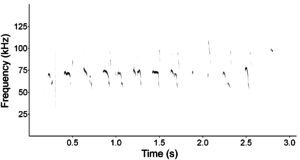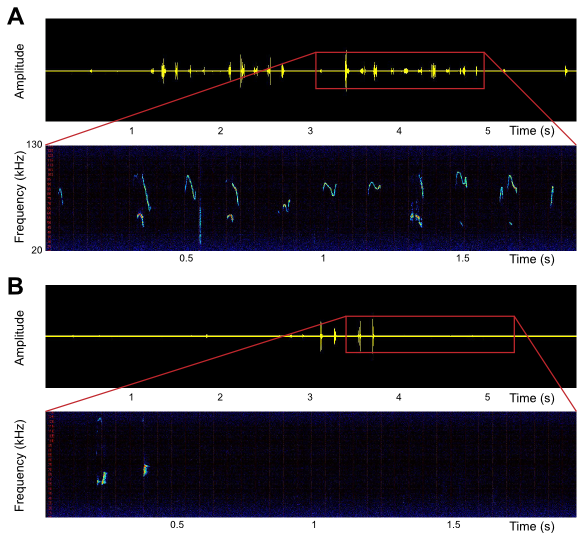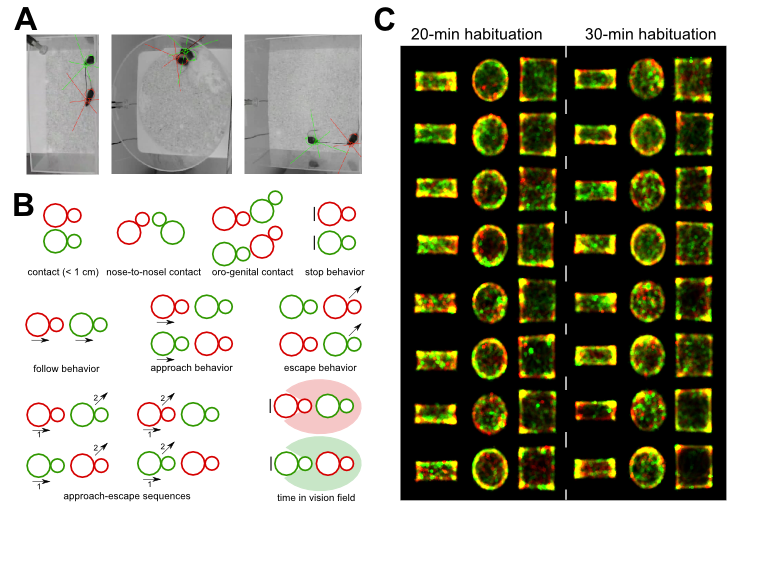About
In order to characterize the mechanisms leading to autism spectrum disorders, we are studying several mouse models. These models are mutated in a gene of interest that has been associated with ASD in genetic studies in patients by our team. We focus on genes expressed at the synapse, i.e., the junction between neurons. We are studying mice lacking Neuroligin4, Shank2, Shank3, Contactin5 or Contactin6. We concentrate on the behavioral characterization of these models available in the laboratory, both during development and in adulthood. Electrophysiological studies are conducted in collaboration with the unit of D. DiGregorio at the Institut Pasteur. We investigate genotype-related variations in executive functions, stereotyped behaviors and social behavior. More specifically, we have a special expertise on mouse social interactions and ultrasonic communication. We are currently developing the molecular analysis of brain regions to complement our behavioral approach. Our aim is to precisely identify the behavioral and molecular effects of the genetic mutation in each model, in order to design knowledge-based therapeutic strategies. Such studies will also give insight into the molecular bases of social communication.
Mouse behavioral phenotyping
Pup development
In the first two weeks of life of pup litters from heterozygous parents, we are measuring every two days body weight uptake, motor coordination (righting reflex), spatial orientation perception (negative geotaxis) and the emission of pup ultrasonic vocalizations (isolation calls; Figure 1). After one week of life, we also examine the olfactory ability (homing test). We also take notes of developmental hallmarks such as the opening of ears and eyes, and the eruption of teeth.

Adult and juvenile characterization
In adult mice (and to some extent and with adaptations in juveniles), we test littermates for anxiety (dark-light box, plus-maze), locomotion and exploration (open field), motor coordination (rotarod), working memory (Y-maze), object recognition, stereotyped behaviors (observation of self-grooming, digging, and jumping in a test cage) as well as social behavior (3-chambered test). We investigate in more details free social interactions with simultaneous recordings of ultrasonic vocalizations between same-sex conspecifics (occupant – new-comer), and between a male and an estrus female. For this purpose, we are using MiceProfiler, a plugin from the ICY platform developed at the Institut Pasteur allowing a semi-automated analysis of mouse social interactions1.
Behavioral characterization of mouse models of autism spectrum disorders
Nlgn4 mutant mice
Mutations in NEUROLIGIN4 (NLGN4) have been associated with ASD2. Nlgn4 codes a post-synaptic cell adhesion molecule. Initially, adult Nlgn4-/- mice displayed reduced social interactions and ultrasonic vocalizations in comparison with Nlgn4+/+ mice3. Interestingly, in a follow-up study in our laboratory, the Nlgn4-/- mice did not show any social or vocal impairment, suggesting that compensation mechanisms might occur in mouse models of ASD4. In the original laboratory, Nlgn4-/- mice still displayed some deficits, but to a lesser extent than initially5,6. This variability is reminiscent of the phenotypic variability of patients with ASD. Discussing these points is very valuable for the community to point out the importance of replicating the results in such behavioral characterizations of mouse models.
Shank2 & Shank3 mutant mice
Mutations in the SHANK gene family were associated with ASD (SHANK17; SHANK28; SHANK39; 10). Shank2 and Shank3 code post-synaptic scaffolding proteins located at excitatory synapses. Shank2-/- mice showed abnormal glutamate neurotransmission, they were highly hyperactive, and displayed higher anxiety, increased self-grooming, and more hind limb clasping than Shank2+/+ littermates. Both male and female Shank2-/- mice had difficulties in maintaining social contacts and were impaired in their usage and structure of ultrasonic vocalizations in comparison with pairs involving wild-type mice (Figure 2)11–13.

Shank3-/- mice are currently undergoing a complete behavioral characterization, associated with a molecular characterization of different brain regions at an individual level. In a preliminary study, this model of Shank3-/- mice displayed reduced GluA levels in post-synaptic density and increased self-grooming11.
Further investigations should concentrate on phenotypic reversal in these models, and especially on lowering hyperactivity in Shank2-/- mice and self-grooming behavior in Shank3-/- mice. We also aim at identifying factors explaining the large inter-individual variability in these models.
Cntn5 & Cntn6 mutant mice
CONTACTIN5 and CONTACTIN6 are neural recognition proteins from the immunoglobulin super-family. They are involved in axonal orientation, synaptic connection and synaptic plasticity. Mutations in CNTN5 and CNTN6 have recently been associated with ASD14. Cntn6-/- mice displayed deficits in motor coordination in comparison with Cntn6+/+ mice15. Cntn5-/- and Cntn6-/- mice were behaviorally characterized. The article is in preparation.
Methodological developments
Test cage
Another aim of the mouse model project is to optimize the classical behavioral tests. We recently tested the effect of different environmental conditions (cage size and shape, habituation time to the cage) on social interactions and ultrasonic vocalizations16 (Figure 3). We found that a reasonably sized rectangular cage and 20-min habituation did not constrain social interactions in adult mice.

mouseTube database
In collaboration with Nicolas Torquet (UMR 8246, Neurophysiology and behavior, IBPS, Paris), we developed mouseTube. This database is designed to share mouse ultrasonic recording files in order to boost knowledge on the social and communication behavior of mice (see tools). It is accessible here http://mousetube.pasteur.fr.
Social motivation
Autism spectrum disorders might be characterized by impairments in social motivation17. We are therefore currently setting up a protocol to evaluate the social reward system in mouse models of autism spectrum disorders. In a preliminary study, we already found that the interest for social contacts was not increased by previous social isolation in Shank2-/- females, whereas Shank2+/+ females were significantly more motivated to interact socially after isolation than after group housing (E. Ey, unpublished data).
Video tracking
We are currently working together with Fabrice de Chaumont (Analyses d’Images Biologiques, Institut Pasteur) to develop a new setting allowing the tracking of several mice in a complex social environment over several days. Preliminary data already suggest that the spontaneous social and vocal behavior is enriched, in comparison with classical test conditions (E. Ey, unpublished data). By using this design, we will be able to characterize the deficits in social communication caused by the mutations in more details and with the minimum of experimental biases.
- De Chaumont, F. et al. Nat. Methods (2012).
- Jamain, S. et al. Nat. Genet. (2003).
- Jamain, S. et al. Proc. Natl. Acad. Sci. U. S. A. (2008).
- Ey, E. et al. Genes Brain Behav. (2012).
- El-Kordi, A. et al. Behav. Brain Res. (2013).
- Ju, A. et al. Behav. Brain Res. (2014).
- Sato, D. et al. Am. J. Hum. Genet. (2012).
- Leblond, C. S. et al. Plos Genet. (2012).
- Durand, C. M. et al. Nat. Genet. (2007).
- Leblond, C. S. et al. PLoS Genet. (2014).
- Schmeisser, M. J. et al. Nature (2012).
- Ey, E. et al. Behav. Brain Res. (2013).
- Ferhat, A.-T. et al. J. Vis. Exp. (2016).
- Mercati, O. et al. Mol. Psychiatry (2016).
- Takeda, Y. et al. J. Neurobiol. (2003).
- Ferhat, A.-T. et al. PLOS ONE (2015).
- Chevallier, C. et al. Trends Cogn. Sci. (2012).
(note: all protocols have been approved by the ethical committee of the Institut Pasteur)


